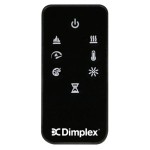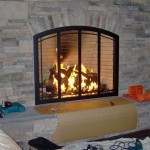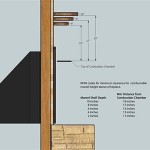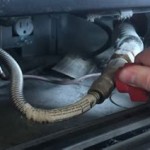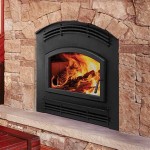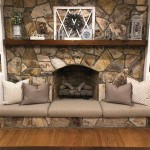Outdoor Gas Fireplace Kits: A Comprehensive Guide
Outdoor gas fireplace kits offer a convenient and aesthetically pleasing way to enhance any outdoor living space. These kits provide a pre-engineered and often pre-cut solution for constructing a beautiful and functional fireplace without the complexities typically associated with traditional masonry. This article aims to provide a comprehensive overview of outdoor gas fireplace kits, covering their benefits, key components, installation considerations, and best practices for selecting the right kit for specific needs.
The appeal of outdoor gas fireplaces extends beyond mere warmth. They serve as focal points for social gatherings, create ambiance with their flickering flames, and can even increase property value. Compared to wood-burning fireplaces, gas models offer ease of use, consistent heat output, and reduced maintenance. The kits further streamline the process by providing all necessary components, minimizing the need to source individual materials and ensuring compatibility.
Whether the goal is to create a cozy patio retreat, a sophisticated deck enhancement, or a welcoming backyard entertainment area, an outdoor gas fireplace kit provides a readily accessible and versatile solution.
Benefits of Using Outdoor Gas Fireplace Kits
Opting for a pre-packaged kit for an outdoor gas fireplace offers several advantages over constructing a custom fireplace from scratch. These benefits range from cost-effectiveness to simplified installation and long-term convenience. Understanding these advantages is crucial for making an informed decision.
Cost Savings: While the initial investment in a kit might seem significant, it often proves more cost-effective in the long run. Sourcing materials individually, particularly specialized components like gas burners and ignition systems, can be more expensive and time-consuming. Kits provide a bundled price, often including all necessary hardware and accessories. Furthermore, pre-cut materials, common in modular kits, reduce labor costs associated with cutting and shaping raw materials.
Simplified Installation: Kits are designed with ease of installation in mind. Instructions are typically clear and comprehensive, minimizing the potential for errors. Pre-cut or modular components further streamline the process, allowing for faster assembly. This reduced installation time can translate to lower labor costs if professional installation is chosen. For DIY enthusiasts, kits offer a manageable project, eliminating the need for extensive masonry skills.
Design Consistency: A key advantage of using a kit is the assurance of consistent design and aesthetics. All components are designed to work together seamlessly, creating a unified and visually appealing fireplace. This eliminates the guesswork involved in matching materials and ensuring that the finished product meets desired aesthetic standards. Kits are available in a variety of styles, ranging from contemporary to rustic, allowing alignment with existing outdoor decor.
Compliance with Codes and Regulations: Reputable outdoor gas fireplace kits are designed to comply with relevant safety codes and regulations. This is especially important when dealing with gas appliances, as adherence to safety standards is paramount. Purchasing a certified kit provides peace of mind knowing that the fireplace has been tested and meets established safety requirements. This can simplify the permitting process and reduce the risk of potential hazards.
Reduced Maintenance: Gas fireplaces, in general, require less maintenance compared to wood-burning fireplaces. Kits often incorporate features designed for durability and longevity, further minimizing maintenance needs. Regularly scheduled inspections by a qualified technician are still recommended to ensure safe and efficient operation.
Key Components Found in Outdoor Gas Fireplace Kits
Understanding the components included in an outdoor gas fireplace kit is essential for selecting the right kit and ensuring a successful installation. The specific components may vary depending on the kit's design and complexity, but certain core elements are typically included. A thorough review of the kit's contents is recommended before beginning the installation process.
Fireplace Enclosure: This forms the structural shell of the fireplace. It can be constructed from a variety of materials, including concrete block, pre-cast concrete, or metal framing. The enclosure provides the necessary support and containment for the firebox and surrounding materials. The exterior of the enclosure can be finished with various materials, such as stone veneer, brick, or stucco, to achieve the desired aesthetic.
Firebox: The firebox is the heart of the fireplace, housing the gas burner and providing a safe and controlled environment for the flames. It is typically constructed from durable, heat-resistant materials like stainless steel or refractory brick. The firebox design often incorporates features to enhance airflow and optimize combustion. The firebox's size and shape influence the visual appearance of the flames and the overall heat output of the fireplace.
Gas Burner: The gas burner is the component responsible for producing the flames. It is specifically designed to deliver a consistent and controlled flow of gas, ensuring a safe and efficient combustion process. Burners are available in various sizes and configurations, influencing the flame height and intensity. The burner's design also affects the visual appearance of the flames, with some burners creating realistic-looking flames that mimic a wood-burning fire.
Ignition System: The ignition system is responsible for initiating the burning process. Options include electronic ignition, spark ignition, and standing pilot ignition. Electronic ignition systems offer push-button convenience and increased safety by automatically shutting off the gas supply if the flame is extinguished. Spark ignition systems rely on a manual spark to ignite the gas. Standing pilot systems maintain a small pilot flame that continuously burns, providing a ready source of ignition. Each system has advantages and disadvantages related to ease of use, energy efficiency, and reliability.
Control Valve and Gas Line Fittings: These components regulate the flow of gas to the burner and ensure a secure and leak-free connection to the gas supply. The control valve allows for adjusting the flame height and heat output. Gas line fittings are designed to meet specific safety standards and ensure a tight seal, preventing gas leaks.
Decorative Media: Kits often include decorative media to enhance the visual appeal of the firebox. Options include fire glass, lava rock, ceramic logs, and river stones. These materials are designed to withstand high temperatures and add a touch of elegance to the fireplace. The choice of decorative media influences the overall aesthetic of the fireplace and can be customized to match personal preferences.
Ventilation System (if required): Some gas fireplaces require a ventilation system to ensure proper combustion and prevent the buildup of harmful gases. This is particularly important for fireplaces installed in enclosed or semi-enclosed spaces. The ventilation system typically consists of a vent pipe that directs exhaust gases away from the living area. The need for a ventilation system depends on local codes and the design of the fireplace.
Installation Considerations for Outdoor Gas Fireplace Kits
Proper installation is critical for ensuring the safe and efficient operation of an outdoor gas fireplace. Several factors must be considered before, during, and after the installation process. Ignoring these considerations can lead to safety hazards, performance issues, and costly repairs. It is always advisable to consult with a qualified professional for assistance with installation, especially if unfamiliar with gas line connections or electrical wiring.
Planning and Permitting: Before commencing installation, it is vital to check local building codes and obtain any necessary permits. Codes vary by location and may dictate specific requirements for gas line installation, ventilation, and setback distances from structures and property lines. Failure to obtain the required permits can result in fines and delays. Proper planning also involves assessing the selected location to ensure it meets the spatial requirements of the kit and allows for adequate ventilation.
Gas Line Connection: Connecting the gas line to the fireplace requires specialized skills and knowledge. It is essential to ensure a secure and leak-free connection to prevent gas leaks, which pose a serious safety hazard. Hiring a qualified gas technician for this task is strongly recommended. The gas line should be sized appropriately to accommodate the fireplace's gas consumption requirements. All connections should be tested for leaks using a leak detection solution.
Electrical Wiring (if applicable): Some fireplaces include electrical components, such as electronic ignition systems or lighting. If electrical wiring is required, it should be performed by a licensed electrician in accordance with local electrical codes. Proper grounding is essential to prevent electrical shock hazards. The wiring should be protected from the elements to prevent corrosion and damage.
Enclosure Construction: The enclosure should be constructed according to the kit manufacturer's instructions. Proper support and reinforcement are essential to ensure the structure's stability and prevent cracking or collapse. The enclosure should be level and plumb to ensure a visually appealing and functional fireplace. The exterior of the enclosure can be finished with various materials, such as stone veneer, brick, or stucco, to achieve the desired aesthetic. Ensure that the finishing materials are suitable for outdoor use and can withstand the elements.
Ventilation Requirements: As previously mentioned, certain gas fireplaces require a ventilation system to ensure proper combustion and prevent the buildup of harmful gases. The ventilation system should be installed according to the manufacturer's instructions and local codes. The vent pipe should be properly sealed and insulated to prevent leaks and condensation. Regular inspection and maintenance of the ventilation system are essential to ensure its continued effectiveness.
Testing and Inspection: After installation, it is crucial to thoroughly test the fireplace to ensure it is functioning correctly and safely. Check for gas leaks, proper ignition, and consistent flame height. A qualified technician can perform a comprehensive inspection to verify that the installation meets all safety requirements. Regular inspections are also recommended to identify potential problems early and prevent costly repairs.
By carefully considering these installation factors and adhering to manufacturer's instructions and local codes, the installation process can be completed safely and successfully, providing years of enjoyment from your outdoor gas fireplace.

Semplice Outdoor Fireplace Kit Rcp Block Brick

42 Outdoor Gas Fireplace Electronic Ignition Fine S

Outdoor Fireplace Kits Stonewood S Cape Cod Ma Nh Ct

Outdoor Fireplaces Diy Kits Plans Cape Cod Ma Ri

A Guide To Ping For Outdoor Fireplace Kits

Semplice Outdoor Fireplace Kit Rcp Block Brick

Outdoor Gas Fireplaces Valor

Outdoor Fireplace Kits Masonry Stone

Regency Horizon Hzo42 Modern Outdoor Gas Fireplace

Majestic Lanai 60 Linear Outdoor Gas Fireplace Odlanaig North Country Fire


